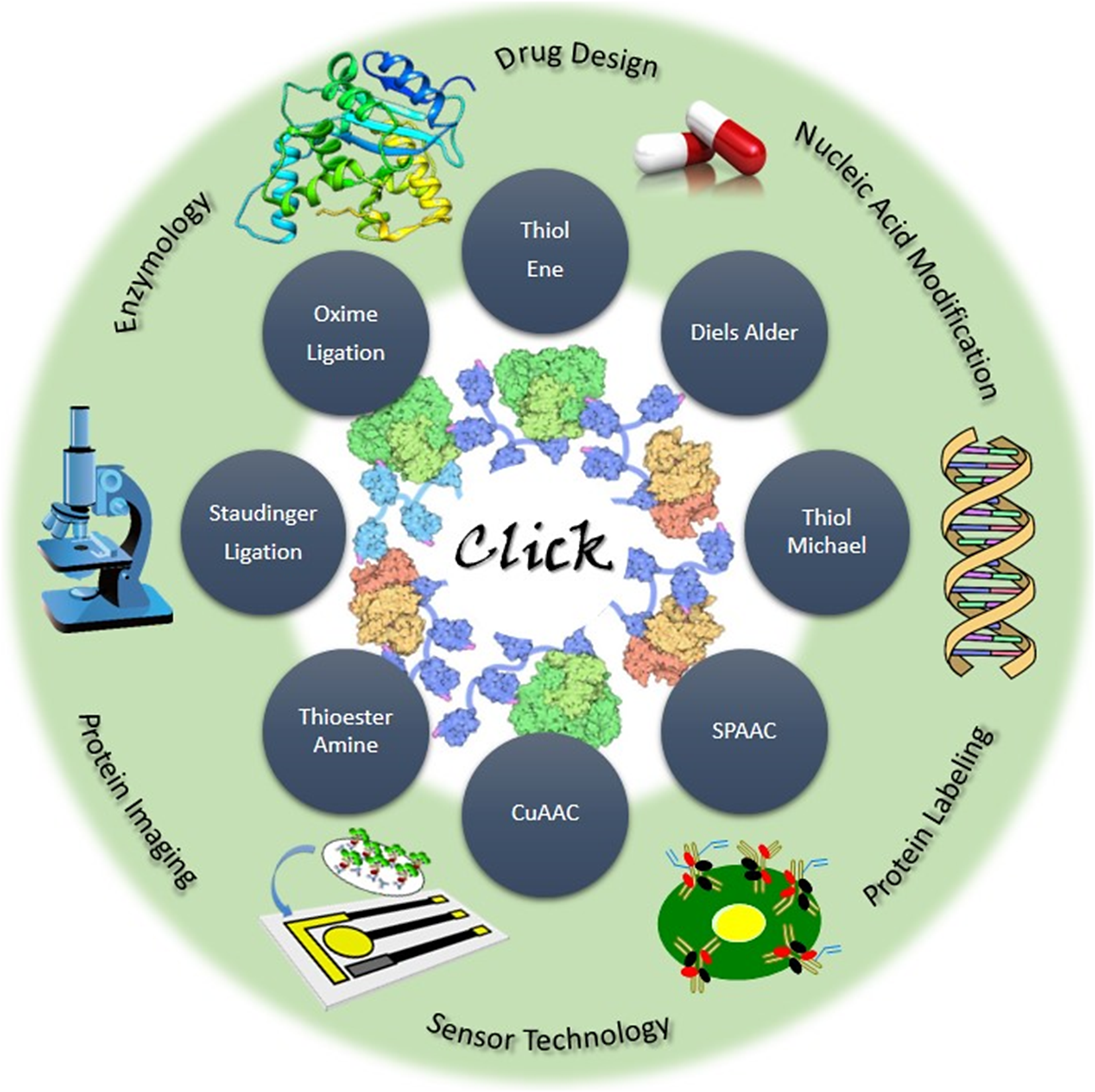Published online by Cambridge University Press: 15 April 2024

A revolution in chemical biology occurred with the introduction of click chemistry. Click chemistry plays an important role in protein chemistry modifications, providing specific, sensitive, rapid, and easy-to-handle methods. Under physiological conditions, click chemistry often overlaps with bioorthogonal chemistry, defined as reactions that occur rapidly and selectively without interfering with biological processes. Click chemistry is used for the posttranslational modification of proteins based on covalent bond formations. With the contribution of click reactions, selective modification of proteins would be developed, representing an alternative to other technologies in preparing new proteins or enzymes for studying specific protein functions in different biological processes. Click-modified proteins have potential in diverse applications such as imaging, labeling, sensing, drug design, and enzyme technology. Due to the promising role of proteins in disease diagnosis and therapy, this review aims to highlight the growing applications of click strategies in protein chemistry over the last two decades, with a special emphasis on medicinal applications.